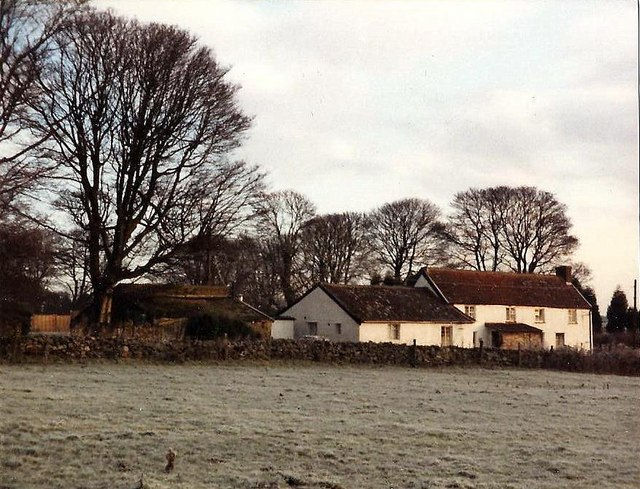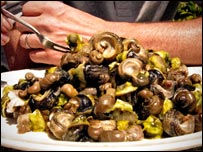Priddy oggies, Paul Leyton and Mendip wallfish
- rosemarydearman1
- Oct 18, 2018
- 6 min read
You may remember that the other day I was asked to produce a pie for David's special dinner and that I was tossing up between the one I wrote about and Priddy Oggies. I loved the name, and like the rest of the world thought that a name like that denoted an ancient English dish. But no. Jane Grigson - I found the recipe in her book Good Things - who researches her recipes well, noted that it was in fact an invention by one Paul Leyton who ran a pub in a village called Priddy in Somerset called The Miner's Arms in the 60s and 70s. Alas it is no longer open for business - my sister tells me that lots of pubs in England are closing, but here is a photo of it in better times.

Anyway I mentally told myself I would come back to this, and I looked no further at the time. Today was the day I decided to revisit and as always I found there was more to tell than simply deliver a recipe for a Priddy oggy.
I will start with the Priddy oggy recipe though, which involves two different Pauls.
The name is actually a combination of the place where it was invented and a traditional Cornish name for a pasty. Because it's a pasty shaped pie. The filling is quite different from a traditional Cornish pasty though - the original Priddy Oggy is a cheesy pastry with a filling of pork and smoked pork, ham or bacon and more cheese. This is the recipe in Jane Grigson's book. The pastry is pretty interesting. Don't think I have seen pastry made this way before.

PRIDDIE OGGIES
Cheese pastry
225g plain flour
25g each butter and lard
1 small egg yolk
85g grated mature Cheddar or 1/2 Parmesan and 1/2 less mature Cheddar
2 1/2 tablespoons water
pinch salt
Meat
1 pork tenderloin (fillet) wishing about 560g
Generous 25g very thinly sliced smoked pork, smoked bacon or Bayonne ham
Stuffing
75g grated mature Cheddar or 1/2 Parmesan, 1/2 mild Cheddar
sprig parsley, chopped
good pinch salt
8 drops Tabasco or cayenne, or freshly ground black pepper
large egg
Make the pastry first. Mix all the ingredients, except the flour, in a bowl. It helps to warm the butter and lard slightly. Cool the mixture in the refrigerator until firm. Sieve the flour, and rub the cooled mixture in roughly. Take about 75g-110g of this crumble pastry and roll it two or three times into a 1 cm slab. Repeat, placing each slab upon the other: moisten the top of the pile before putting another slab of pastry on it. Press down firmly and cut down into several 75-110g lumps. Repeat the rolling process twice more. Leave 30 minutes in a cold place. Cut into 8 pieces. Squeeze each one into a sausage shape, and roll out to measure 10-15 cm. Leave to rest for an hour.
Trim pork of fat and skin. Slice it lengthways into two halves, and beat gently until the are 5mm-1cm thick. Cut the smoked pork, bacon or ham into 8 strips.
Make the cheese stuffing. Beat the egg, and put half of it aside. Mix in the cheese, parsley, salt and tabasco. Spread evenly over the two cut sides of the pork. Roll each piece up, press down firmly, and leave in the freezer to harden.
To assemble the oggies, cut each roll of tenderloin into 4 pieces. Wrap them round with a strip of smoked pork, ham or bacon. Lay each little parcel in the middle of a piece of pastry which should be moistened around the edge with milk. Bring the pastry up and over the pork, pressing the two edges together in a scalloped crest, like a Cornish pasty. Press down to flatten the base, and trim where necessary. Brush over with the rest of the beaten egg and bake for 10 minutes at 170ºC to 180ºC, until the pastry begins to brown. Finish in deep fat; or fry in lard, turning the oggies over until they are golden brown. Before cooking they can be stored in a refrigerator for 3 days, or in a deep-freeze for 3 months. In the latter case give them 15-20 minutes in the oven, before frying.
I'm guessing that when Paul Leyton stopped making the recipe it disappeared, but it seems to have been revived by the other Paul - Paul Hollywood of The Great British Bake-Off fame. It is interesting to me that there seems to be a bit of a revival of traditional English food albeit with new twists. Paul Hollywood's twist is to add apple to the mix and to chop the meat beforehand, not to mention that there is no deep frying at the end. The pastry is rather simpler too. So probably a slightly healthier version. You can find this recipe online in a Google Book. I'm not entirely sure which picture is the correct one here. They were both labelled Priddy Oggies on Google - the one on the right is clearly Priddy Oggies but I'm not sure of the other one.
And whilst we are still on variations - when I was looking the other day I found a version which called itself a Priddy Oggy but wasn't really. It was variation gone too far really because it was a vegan, gluten free recipe, so no fat or cheese and the filling was tofu based. I'm not saying that it was not a perfectly valid recipe for a vegan kind of pasty but it certainly wasn't a Priddy Oggy which is very specifically about pork, cheese and bacon - or ham.
But back to Paul Leyton. The more I looked the more interesting I found that he was. He was in the navy in WW2 - I think as a pilot and also as an engineer. After the war he bought a double-decker bus in which he and his family lived for five years - it even had an Aga oven. He then became a rocket engineer for the British Space effort - being one of the chief people involved in the first ever space rocket tested successfully at Wimmera. But the British government abandoned it and he left them in a huff. For a while he worked for Black and Decker, but then in 1961 in a mid-life change of direction he bought the Miner's Arms which became much lauded for its food and patronised by the likes of Delia Smith and Anthony Hopkins as well as getting chefs hats in The Good Food Guide by Egon Ronay. As well as the Priddy Oggy he also popularised the local snails which feature in this wonderfully dated video. That's him in the picture:

The video was obviously made when he first started serving snails because he later devised a method of breeding snails in a swimming pool. And yet again - his dish, called Mendip Wallfish - became famous, disappeared and has recently been revived - again part of the booming industry of foraging and local produce. I found two versions of the recipe. One at a site called Lucy's Garden which cheated a bit by using canned French snails, and another from the Campaign for Real Farming which includes how to farm and purge them. I also discovered at this late stage of writing this blog, that the snails are just common garden snails and that the name of Mendip Wallfish is just the Somerset name for the snails. All a bit gruesome really. I have only once eaten snails - at Paul Bocuse's restaurant where they came as the 'free' amuse bouche. So of course I had to eat them, and I have to say they were pretty delicious - although it might just have been the sauce.
But back to Paul Leyton because that wasn't all - later in his time at the pub he developed his own beer and opened the first micro brewery in England. And we all know where that trend has gone over time. So a remarkable man.
“one of those rare, remarkable Englishmen who are slightly eccentric without realising it and who have a versatility close to genius”. Julian Leyton (son)
His sons followed him into the hospitality industry and his grandson is now involved with a restaurant called Ensemble in the cathedral town of Wells in Somerset.

So there you go. A bit of history, a remarkable man, an interesting dish. I might give it a go some time - the Priddy Oggy that is, although I might stick to the more recent version, but then again maybe not. You could always forego the final deep frying, delicious though that might be, and just bake them in the oven.
Do watch the video - it's very quaint.
















Comments